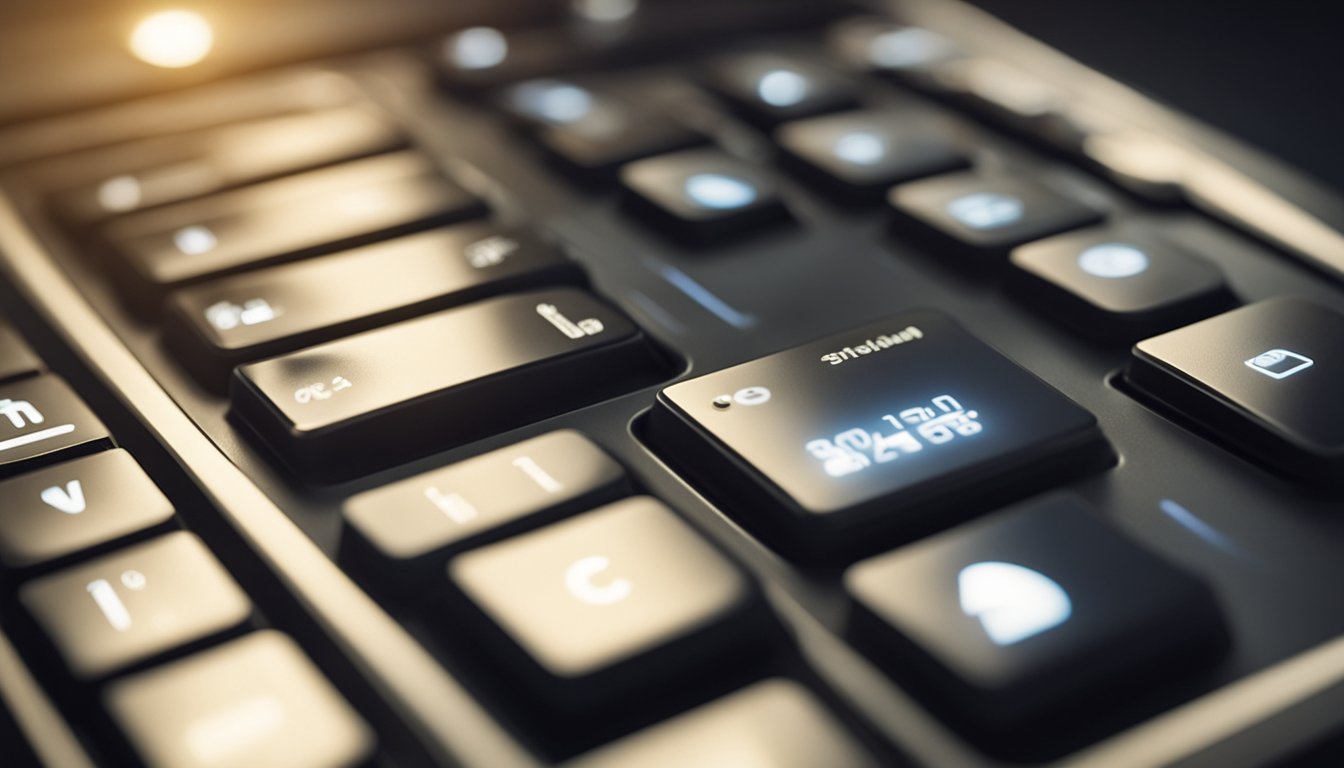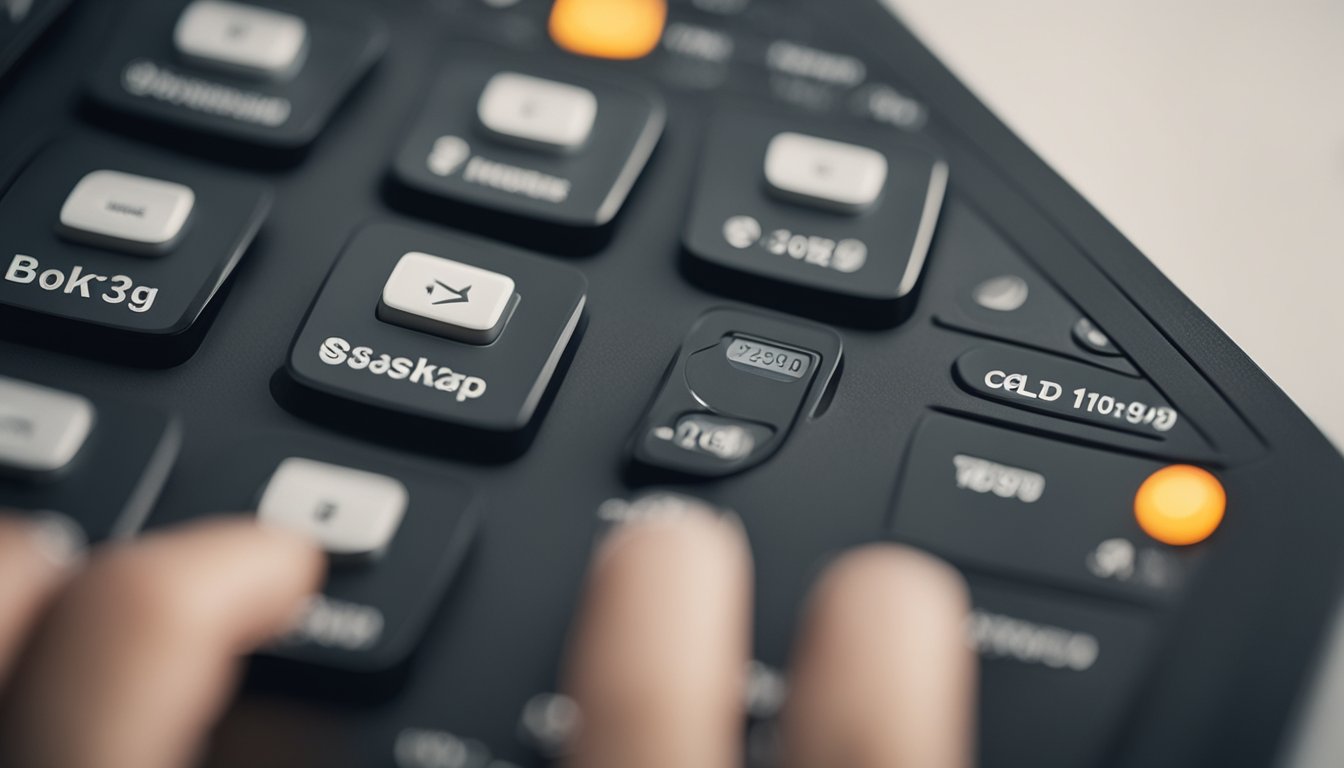Contact
Write to Us And We Would Be Happy to Advise You.
Do you have any questions, or would you like to speak directly with a representative?
By peter
A membrane switch keypad is a type of user interface that is commonly used in electronic devices. They are made up of several layers of flexible materials that include a printed circuit board, adhesive spacer, and a graphic overlay. The keypad is activated by pressing the graphic overlay, which pushes the spacer layer down onto the circuit board, closing the circuit and sending a signal to the device.

One of the key advantages of membrane switch keypads is their durability. They are designed to withstand harsh environments and can be sealed to protect against moisture, dust, and other contaminants. This makes them ideal for use in a wide range of applications, including medical equipment, industrial machinery, and consumer electronics.

If you’re looking for a simple, cost-effective, and durable keypad solution, then a membrane switch keypad might be the perfect fit for you. Membrane switch keypads are widely used in various industries such as medical, automotive, and consumer electronics.
A membrane switch keypad consists of a set of pressure-sensitive switches that are activated when a user presses down on the surface of the keypad. These switches are typically made of a thin, flexible membrane that is printed with conductive ink. When a user presses down on a key, the membrane deforms and the conductive ink makes contact with a circuit layer, completing the electrical circuit and sending a signal to the device.
One of the main advantages of membrane switch keypads is their low profile design, which makes them easy to integrate into compact devices. They are also highly customizable, allowing you to choose from a wide range of colors, shapes, and sizes to fit your specific needs.
Another advantage of membrane switch keypads is their durability. Since there are no moving parts, they are less prone to wear and tear than traditional mechanical keypads. Additionally, the sealed design of membrane switch keypads makes them resistant to dust, dirt, and moisture, which makes them ideal for use in harsh environments.
Overall, membrane switch keypads are a reliable and cost-effective solution for a wide range of applications. Whether you’re designing a medical device, a consumer electronics product, or an industrial control system, a membrane switch keypad can provide you with a simple and effective user interface.

When it comes to membrane switch keypads, design and customization are critical factors that affect user experience and functionality. Here are some of the key design elements that you can customize to meet your specific needs:
The graphic overlay is the top layer of the membrane switch keypad that users see and interact with. It can be customized to include various colors, icons, and text to enhance usability and aesthetics. You can choose from a wide range of materials, including polycarbonate, polyester, and vinyl, to ensure that the overlay is durable and resistant to wear and tear.
The circuit layers are the layers beneath the graphic overlay that contain the conductive traces and contact points that detect user input. You can customize the circuit layers to include different patterns and layouts to accommodate various input methods, such as buttons, sliders, and touchpads. You can also choose from different materials, such as copper, silver, and carbon, to ensure that the circuit layers are reliable and accurate.
Tactile feedback is the physical response that users feel when they press a button or activate a switch on the membrane switch keypad. You can customize the tactile feedback to provide different levels of resistance, snap, and sound to ensure that users have a satisfying and consistent experience. You can choose from different options, such as metal domes, polydomes, and snap domes, to achieve the desired tactile feedback.
In summary, the design and customization of membrane switch keypads are crucial factors that affect user experience and functionality. By customizing the graphic overlay, circuit layers, and tactile feedback options, you can create a membrane switch keypad that meets your specific needs and requirements.
Membrane switch keypads are created using a series of manufacturing processes. These processes include screen printing, die cutting, and assembly.
Screen printing is the process of applying ink to the surface of the membrane switch keypad. This process is used to create the circuitry and legends on the keypad. The ink used in screen printing is typically a conductive silver ink that allows for the flow of electricity through the circuitry. The ink is applied to the surface of the keypad using a stencil or mesh screen. The screen is placed over the membrane keypad, and the ink is pushed through the screen using a squeegee. The ink is then cured using heat, which allows it to bond to the surface of the keypad.
Die cutting is the process of cutting the membrane switch keypad into its final shape. This process is performed using a die cutting machine, which uses a sharp blade to cut the keypad to the desired shape. The die cutting machine is programmed to cut the keypad according to the specifications of the design. Once the keypad is cut, any excess material is removed, and the keypad is inspected for quality.
Assembly is the final step in the manufacturing process of membrane switch keypads. During assembly, the different layers of the keypad are laminated together to create a single, cohesive unit. The layers of the keypad include the graphic overlay, the circuit layer, the spacer layer, and the adhesive layer. The layers are aligned and then pressed together using a laminating machine. Once the layers are laminated together, the keypad is inspected for quality and then packaged for shipment.
Overall, the manufacturing process of membrane switch keypads is a complex and precise process that requires attention to detail and a high level of skill. By following these manufacturing processes, manufacturers can create high-quality membrane switch keypads that are durable, reliable, and long-lasting.
Membrane switch keypads have a wide range of applications and uses across various industries. They are commonly used in electronic devices, home appliances, medical equipment, and industrial machinery. Here are some of the most common applications and uses of membrane switch keypads:
Membrane switch keypads are widely used in consumer electronics such as remote controls, calculators, and digital cameras. They provide a reliable and cost-effective solution for user input functionality. Their low profile design and customizable graphics make them an ideal choice for consumer electronics manufacturers.
Membrane switch keypads are also used in home appliances such as microwave ovens, washing machines, and air conditioners. They provide a user-friendly interface for controlling various functions of the appliance. Their resistance to moisture and heat makes them suitable for use in harsh environments.
Membrane switch keypads are commonly used in medical equipment such as patient monitors, infusion pumps, and diagnostic equipment. They provide a hygienic and easy-to-clean interface for healthcare professionals to operate the equipment. Their low profile design and customizable graphics make them an ideal choice for medical equipment manufacturers.
Membrane switch keypads are also used in industrial machinery such as control panels, vending machines, and factory automation equipment. They provide a reliable and durable interface for controlling various functions of the machinery. Their resistance to dust, moisture, and harsh environments makes them suitable for use in industrial settings.
Overall, membrane switch keypads provide a cost-effective, reliable, and customizable solution for user input functionality across various industries.
When it comes to electronic devices, durability is a key factor to consider. A membrane switch keypad is no exception. These keypads are designed to withstand a fair amount of wear and tear, but they still require proper maintenance to ensure their longevity. In this section, we will discuss the environmental resistance of membrane switch keypads and how to clean and care for them.
Membrane switch keypads are made of multiple layers, including a top graphic overlay, adhesive spacer, circuit layer, and bottom adhesive layer. These layers work together to provide a durable and reliable interface for users. However, they are not invincible and are susceptible to damage from environmental factors.
One of the most common environmental factors that can damage a membrane switch keypad is moisture. Water or other liquids can seep into the keypad and damage the circuit layer, rendering the keypad useless. To prevent this, it is important to keep the keypad dry and away from any liquids.
Another environmental factor that can damage a membrane switch keypad is extreme temperatures. High temperatures can cause the adhesive layers to melt, while low temperatures can cause the layers to become brittle and crack. It is important to keep the keypad in a controlled environment to prevent damage from extreme temperatures.
Proper cleaning and care can help extend the life of a membrane switch keypad. To clean the keypad, use a soft, lint-free cloth and a mild detergent solution. Avoid using abrasive materials or harsh chemicals, as these can damage the keypad. Gently wipe the keypad with the cloth, taking care not to press too hard on the keys.
In addition to cleaning, regular maintenance can also help extend the life of a membrane switch keypad. This can include checking for any loose or damaged keys, as well as inspecting the keypad for any signs of wear and tear. If any issues are found, it is important to address them promptly to prevent further damage.
By following these tips for environmental resistance, cleaning, and care, you can help ensure the durability and longevity of your membrane switch keypad.
Over the years, technological advancements have led to the development of membrane switch keypads that are more efficient and reliable. These advancements have made it possible to manufacture membrane switch keypads that are more durable, have a longer lifespan, and are resistant to wear and tear.
One of the most significant advancements in membrane switch keypad technology is the use of LED lighting. LED lights have revolutionized the way we use membrane switch keypads. They have made it possible to create keypads that are easier to read and use, even in low-light conditions. In addition, LED lighting has made it possible to create keypads that are more energy-efficient.
Another significant advancement in membrane switch keypad technology is the use of haptic feedback. Haptic feedback is a technology that provides tactile feedback to the user when a button is pressed. This technology has made it possible to create keypads that are more user-friendly and easier to use.
In addition, the use of advanced printing technologies has made it possible to create keypads that are more visually appealing. These printing technologies have made it possible to print high-quality graphics and images on the keypads, making them more attractive and user-friendly.
Overall, technological advancements have played a significant role in the development of membrane switch keypads. These advancements have made it possible to create keypads that are more durable, efficient, and user-friendly. With further advancements in technology, it is expected that membrane switch keypads will continue to evolve and become even more efficient and reliable.
Do you have any questions, or would you like to speak directly with a representative?